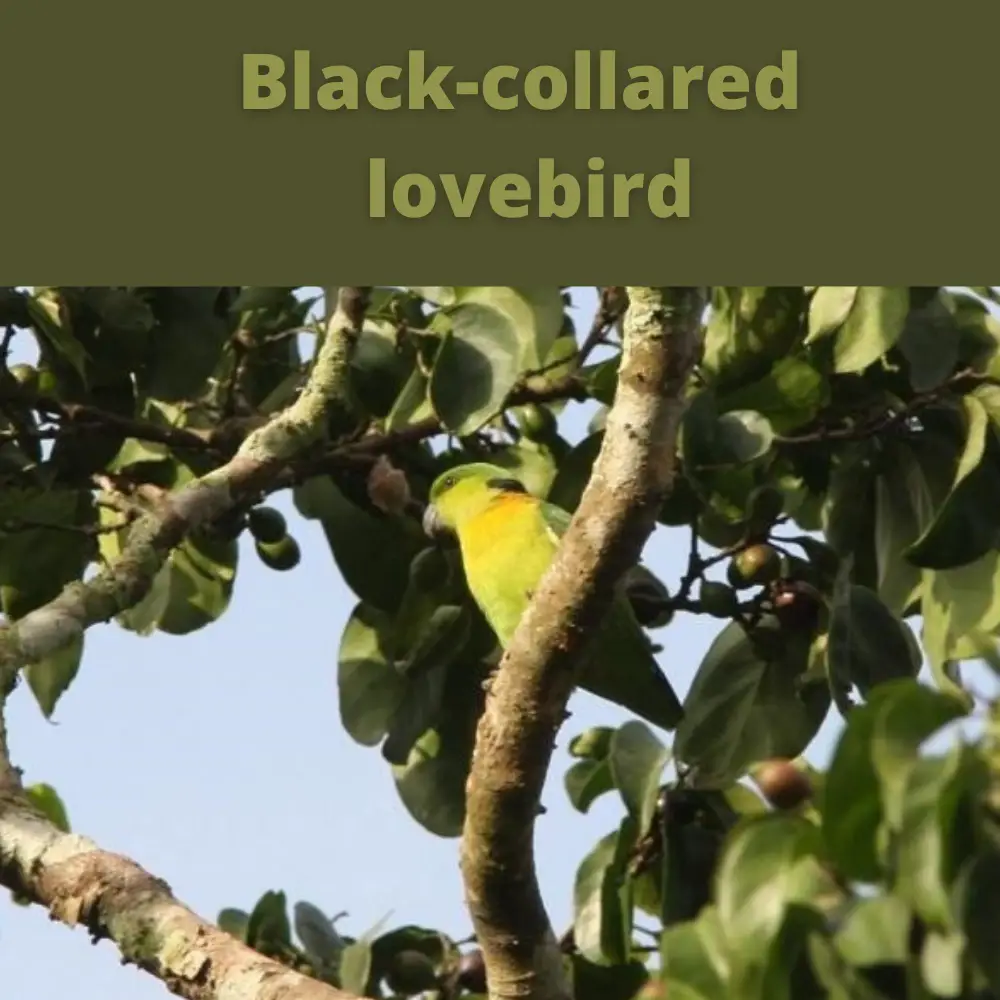Black-collared lovebird: Do you want to meet one of the best species of lovebirds on the planet? The Liberian Lovebird (Black-collared Lovebird), also known as the Tailed Lovebird, is one of the most beautiful of the world’s nine subspecies of this breed. Without a doubt, a bird that everyone would like to have at home.
Although not well known when the species first emerged, it appears to be native to the rainforests of the Congo, despite the fact that very few specimens have been seen in the wild. It could be a bird that could well be considered extinct.
The reason? Very few of these species have been seen in the wild and in captivity, it is expensive to raise them for their diet, which is especially fig-based, which prevents them from growing well in aviaries or domestic settings, so no breeder did not succeed.
| Subspecies | Breeding subregion |
| Agapornis swindernianus emini | n, c and e DR Congo, w Uganda |
| Agapornis swindernianus zenkeri | Cameroon to sw Central African Republic and w DR Congo |
| Agapornis swindernianus swindernianus |
Personality
Black-collared lovebird is a small bird, reaching 13 centimeters in adulthood. The basic color of this bird is green but it has a very characteristic black collar which gives it the name swindermianus.
Black-collared lovebird tail feathers also have greenish tones, but the side feathers have a red stripe, while on the tail the stripe is bluish-purple in color. Its beak is gray and quite curved, more so than that of the rest of the lovebirds. Its iris usually has a yellow tint, and its legs, unlike those of other companion species, are green.
On the contrary that with other species of lovebirds, it is easy to differentiate the male from the female, in this case, does not present sexual dimorphism, so you must look at the pelvic bones to know if it is female or male. When young, both sexes closely resemble males, with a light feather hue that darkens as they grow.
Could you have this bird in captivity?
Black-collared lovebird is true that many lovebirds are kept in captivity without any problems and these can have quite a long lifespan. But, to the misfortune of lovers of this bird with the Liberian Lovebird, it is totally impossible.
Breeders who have tried have never been able to keep this bird alive in captivity for longer than six months and without any signs of breeding. Also, cannot be exported from Africa as their diet is mainly African figs They are quite expensive and very hard to find as they are 30 meters underground. This makes it an impossible bird to keep in a cage.
In addition, it is a bird that does not adapt well to life in captivity, even if it is done when they are young. They do not like to be locked up and the particularity of their diet does not allow them to be raised inside an aviary. This makes them completely impossible and as fewer and fewer of these birds are seen in the wild, they have started banning their export to some countries for fear the breed will become extinct.
Description
The rooster and the hen are the same color, the base color is green.
Distribution
They live in the forests of Africa, where they probably spend their time exclusively on the tops of tall trees.
Lifestyle in nature
They probably spend all their time on tall trees and, unlike other Lovebird species, avoid the ground. It seems that they feed exclusively on a certain species of figs.
Attitude in captivity
Not known, as the few birds that survived import into Europe died during the quarantine period.
Nutrition in captivity
Unknown, they died trying to keep them alive with replacement food.
Related article:


